Cigar History, Cuban Cigars, Guide, The Cigar Blog
The Complete Guide to Cigar Smoking
Whether you are just starting out in the cigar world or are looking to freshen up on the basics, this guide will help you turn from a beginner to a refined and well-educated smoker of cigars!
Click a topic, or scroll down to learn everything!

What Cigar Should You Buy as a Beginner?
Before you even learn how to cut, light and smoke a cigar, you’ll need to choose one to smoke!
Selecting a cigar for the first time can be a challenge as there are so many brands, shapes, sizes and wrapper colours of cigars to choose. For a novice smoker, this can make the decision a bit overwhelming.
Our Recommendations
Our recommendation for beginners to cigar smoking is to choose a smaller cigar because you won’t have to dedicate hours to smoking it, and smaller cigars are often (but definitely not always) milder to smoke. It is best to start with mild cigars because the strength of a full-bodied cigar can be too much for beginners and may put you off.
While you may not want to spend a lot of money on your first cigar, in case you don’t like it, it is always best to pick a premium smoke. If you choose an inferior smoke just because it’s cheap, the chances are, you won’t enjoy it!
But the quality experience of a slightly more expensive, expertly hand-rolled cigar could be just the thing for you! You can find premium cigars for around £10, so while there are cheaper options out there, this is still a reasonable price!
To help you on your journey, take a look at the best cigars for beginners.

Understanding Cigar Sizes
If you are looking to choose your own cigar, then you’ll need to understand vitolas. A vitola refers to the shape, length and ring gauge of your cigar. There are a variety of standard sizes for cigars, which each have their own name, as seen below.
Cigars are measured in length in inches, by their ring gauge, the diameter measured in units of 1/64th of an inch. This means that a 64 ring gauge cigar would be an inch in diameter – although most are smaller than this!
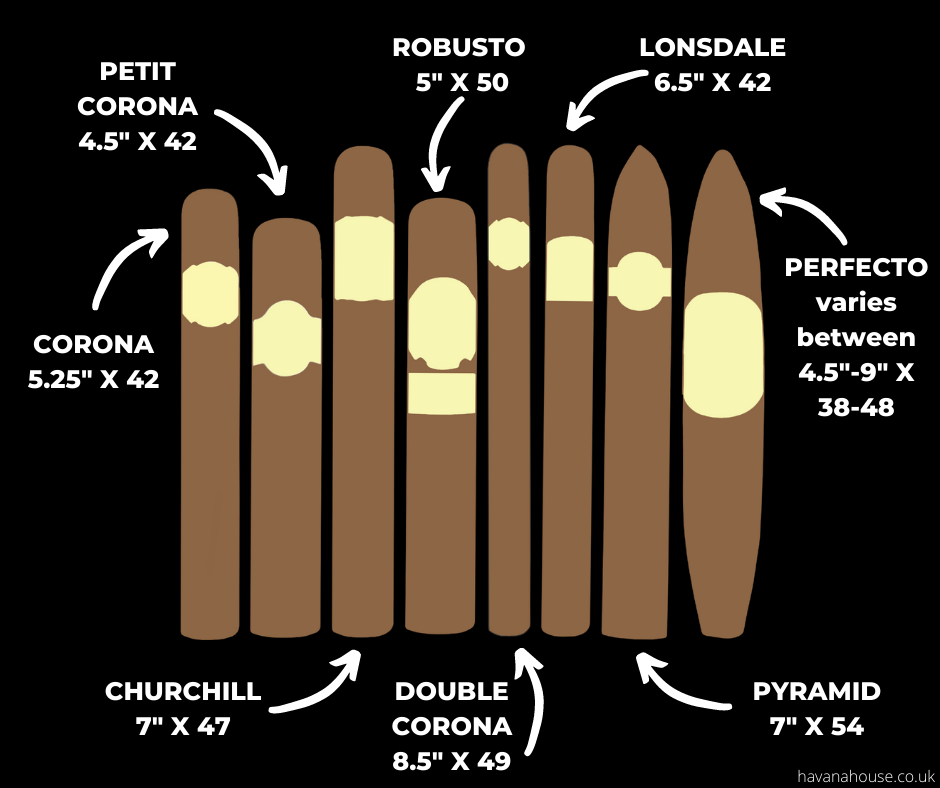
Each vitola has a very similar length, ring gauge and shape, so you will know what size the cigar is by its name alone. For example, the Montecristo No 3, the Davidoff Chateau Latour and the Hoyo de Monterrey Le Hoyo du Roi are all Coronas.

How Much Should You Pay For a Quality Cigar?
A question that many new smokers have is how much they should be paying for a cigar. While it may seem like you might have to splash out and spend a small fortune to get a quality smoke, prices can actually be fairly reasonable, with quality cigars available under £10.
There are a number of factors which will affect the price of a cigar, such as the brand it is from, how long the tobacco used to make the cigar was aged, how big the cigar is, how many you are buying, and any taxes that may be added!

Buying From a Reputable Seller
Because premium cigars are so desirable, there is, unfortunately, an issue with counterfeit cigars, especially Cuban smokes. To avoid receiving a disappointing, fake smoke, it is important to buy from a reputable seller, such as Havana House.
Genuine Cuban cigars feature several stamps and seals that ensure the cigars are genuine and are certified as being of a high quality for the English market.

How Do You Prepare a Cigar For Smoking?
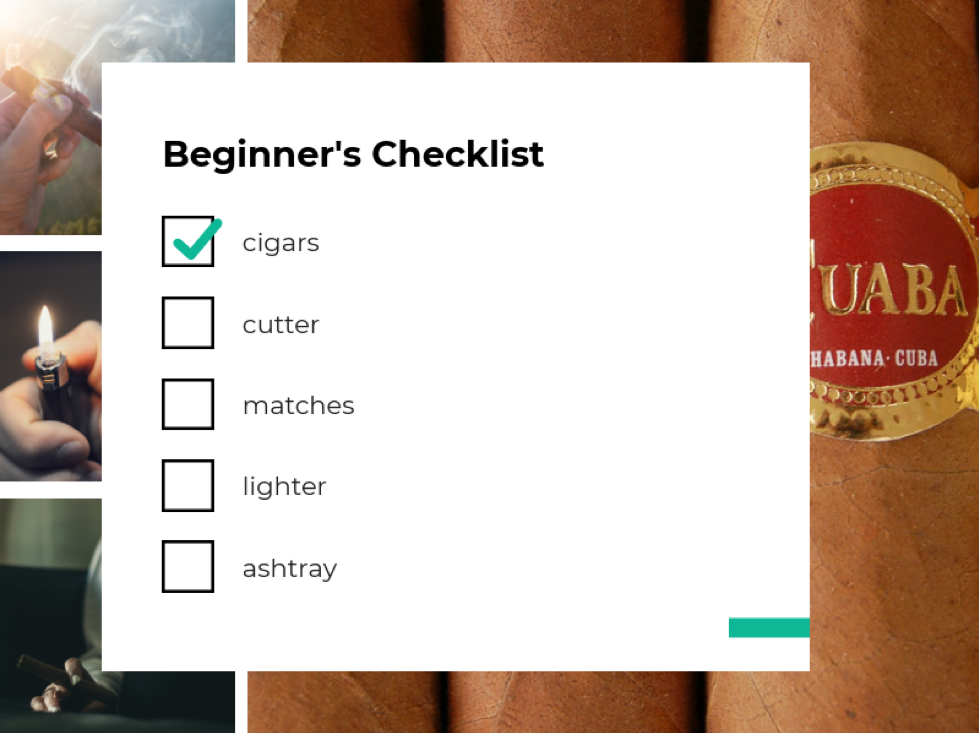
The first step in cigar preparation is to cut the cap with a cigar cutter. Removing this part allows you to draw through the cigar and puff through it.
Using a knife (or your teeth!) is a big no-no, so a proper cigar cutter, such as a guillotine, cigar punch, double-blade cutter or V-cutter will be required. It is important to use a quality cutter with a sharp blade to ensure a clean cut.
Using a blunt, or low-quality cutter can cause damage to the wrapper, which you want to remain intact. The cap is a small piece of wrapper that has been glued to the end of the cigar.
Only 2-3mm of this needs to be removed with the cutter. Use a strong, quick motion to chop off the end, as this will prevent the wrapper from tearing. For those new to smoking, a double-bladed guillotine cutter is the best bet.
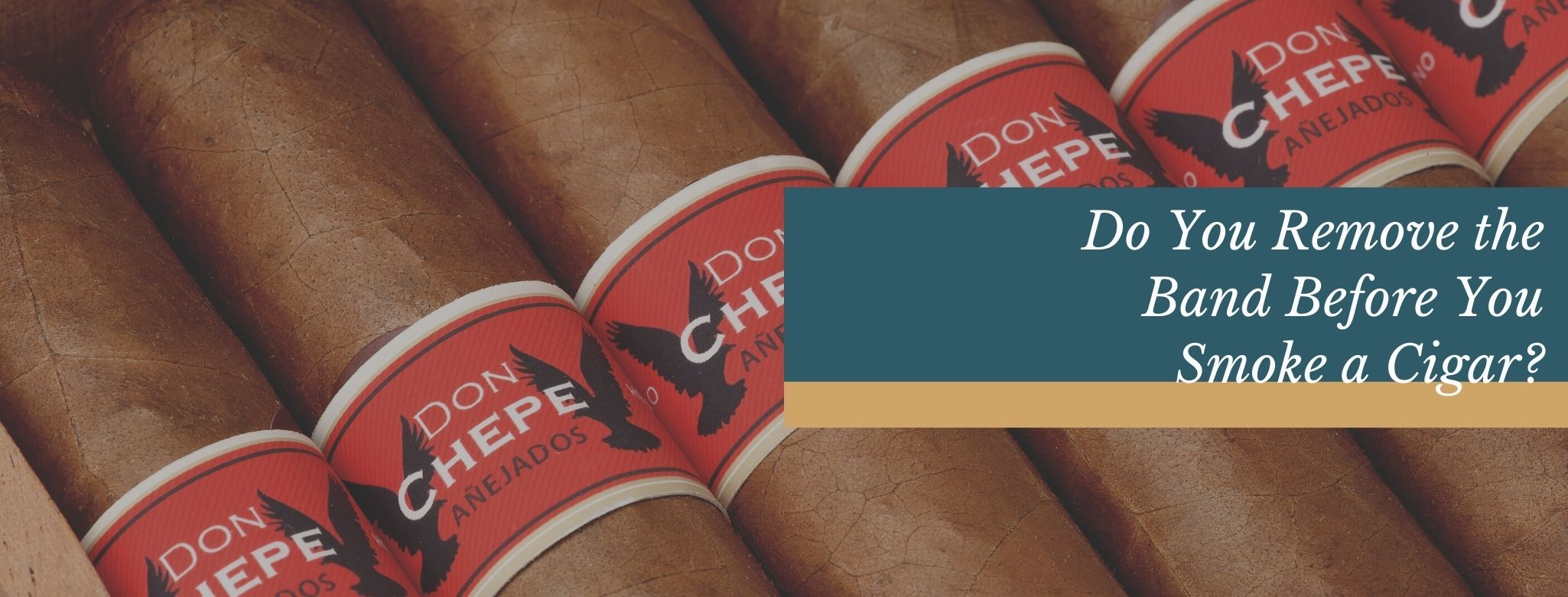
Do You Remove the Band Before You Smoke a Cigar?
This is a matter that is debated back and forth between even the most advanced aficionados out there, so as a beginner, it is fine to be unsure of the protocol regarding band removal! There are a number of arguments for and against removing the band.
For Removing the Band
Firstly, if you smoke a cigar with the band still on, and the band begins to burn, your cigar will just taste like burnt paper, which is not good! To prevent this from happening, some remove the band as a preventative measure.
Against Removing the Band
On the other hand, the band is usually affixed to the cigar with a small amount of gum adhesive. Sometimes too much of this is used, and the band can become fused to the wrapper leaf. This means that when the band is removed, a small amount of the wrapper will come away too, which can impact the structure of the cigar.
It can be best to start smoking for a few minutes and allow the heat of the cigar to soften up the gum, allowing you to easily undo the band!

How Do You Light a Cigar?
Lighting the cigar takes a surprising amount of skill; although it is sure to become like second nature with time!
What to Use
The first step in how to light a cigar will be to choose what you are going to light the cigar with. As cigars are a little more complex than cigarettes, it may be an idea to upgrade any cheaper disposable lighters for some long cigar matches, a butane lighter or torch lighter.
Cigar Lighting Technique
- First, toast the foot of the cigar by holding the cigar at a 45-degree angle a little way from the flame, so it isn’t physically touching but is close enough to gently toast. This is different to just fully lighting the cigar, as it ensures that the wrapper and binder are burning as well as the filler.
- Puff a little on the cigar and then check that it is burning evenly. The wrapper and binder at the foot should now look white.
- Next, bring the flame about half an inch away from the foot to fully ignite the filler. Draw in air through the cigar and the flame should take hold of the foot.
- At this point, you will be able to exhale a puff of smoke! Once lit, you may want to wait a minute to allow the burn to stabilise and burn evenly.
Expect to put in some extra toasting on some brands, particularly for those who have selected a cigar with a lot of oily ligero tobacco as part of their blend.

How Do You Smoke a Cigar?
Learning how to smoke a cigar will also take some skill and practice.
Do You Inhale Cigars?
The main guideline for cigar smoking is that you should not inhale the smoke. Unlike cigarette smoke, cigars are not inhaled, as there is too much tobacco and smoke; if you did, you would be coughing up a lung! When ‘puffing’ on a cigar is mentioned, it is quite literal. Instead of inhaling into the lungs, draw smoke into your mouth, hold it a moment, and then blow it out.
Slow and Steady
Regardless of whether you are an experienced cigar smoker, or you are new to the world of the stogie, you should aim to draw on the cigar around every 60-120 seconds.
Smoking too quickly can make the cigar burn too hot and can even make you feel ill; however, not smoking it for more than a few minutes will cause it to go out.
Slow and steady is very much the recommended approach, though, as allowing the cigar to rest will let the flavours caramelise and will give both the cigar and your mouth a chance to cool down.
Once your cigar passes the halfway point and gets to be much smaller, you will want to extend this resting time a little.

How Far Down a Cigar Should You Smoke?
Another hotly debated issue in the cigar world, knowing when to stop smoking a cigar is often more down to personal preferences than actual rules.
Some smokers say that the best part of the cigar is the first half, and so only smoke that much, but that seems rather wasteful! Other cigar lovers argue that around three-finger widths should be left by the time you have stopped smoking.
Another method is to stop smoking when you hit the cigar band (if you have kept that on!), although again this could be very wasteful depending on where the band is positioned on the cigar!
Depends on the Cigar
It also really depends on the type of cigar you are smoking. Some cigars turn hot and harsh as they burn closer to the nub, making the second portion of the smoke less enjoyable.
However, many cigars taste great right up until the end, making it well worth your while to stick with it. As you experiment more with different types of cigars, you will soon discover which ones work best smoked longer, and which should be left to burn!
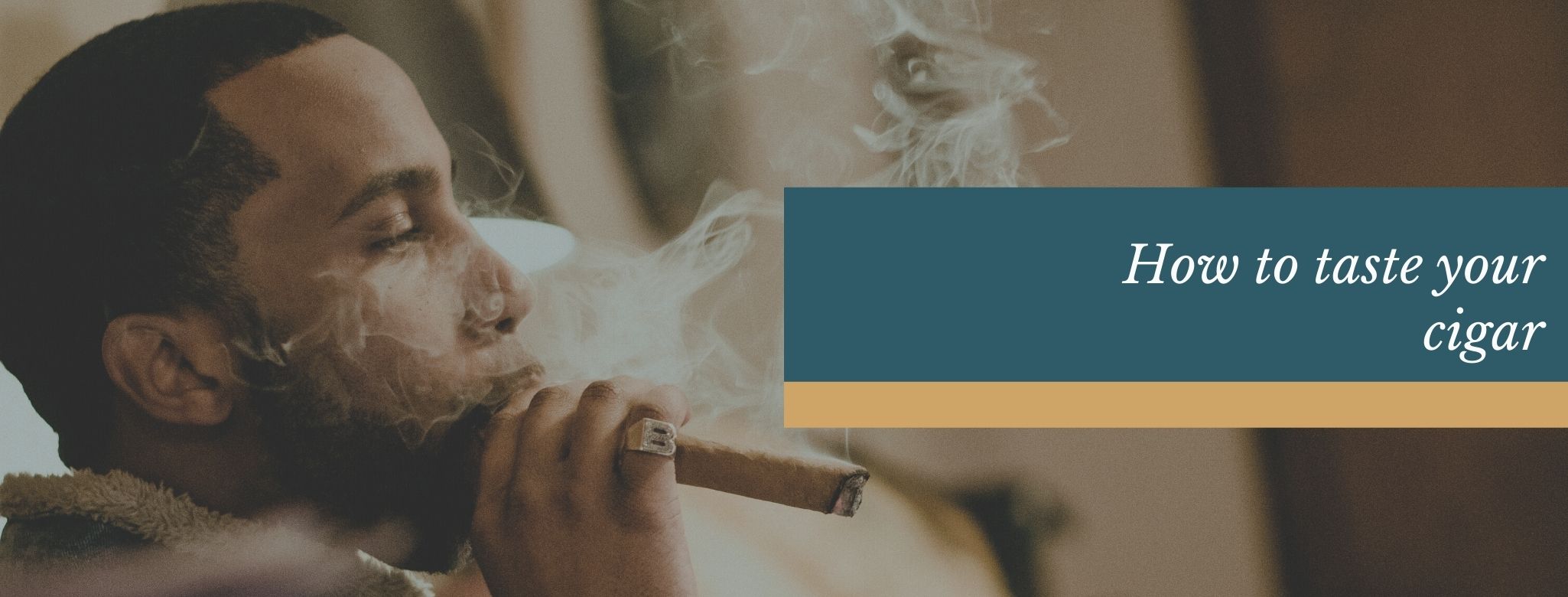
How to Taste
While it may sound silly – there being a right and wrong way to ‘taste’ – adapting the way you taste your cigar could actually make a world of difference in the smoke you experience.
In the context of cigars, learning to taste properly largely refers to learning how to distinguish different flavours and find the subtleties hidden in your cigar. There are a few ways you can taste a cigar properly:
- Smell and taste the cigar before you light it. Place it in your mouth and see if any key flavour notes instantly hit you.
- Take the smoke slowly, so that the cigar doesn’t overheat and cause issues that may affect the taste.
- Let the smoke linger in your mouth to experience a more pronounced aftertaste.
- Retro-hale the cigar, exhaling through the nose to detect any further flavour in the aroma.
- Ensure your palate is kept fresh.
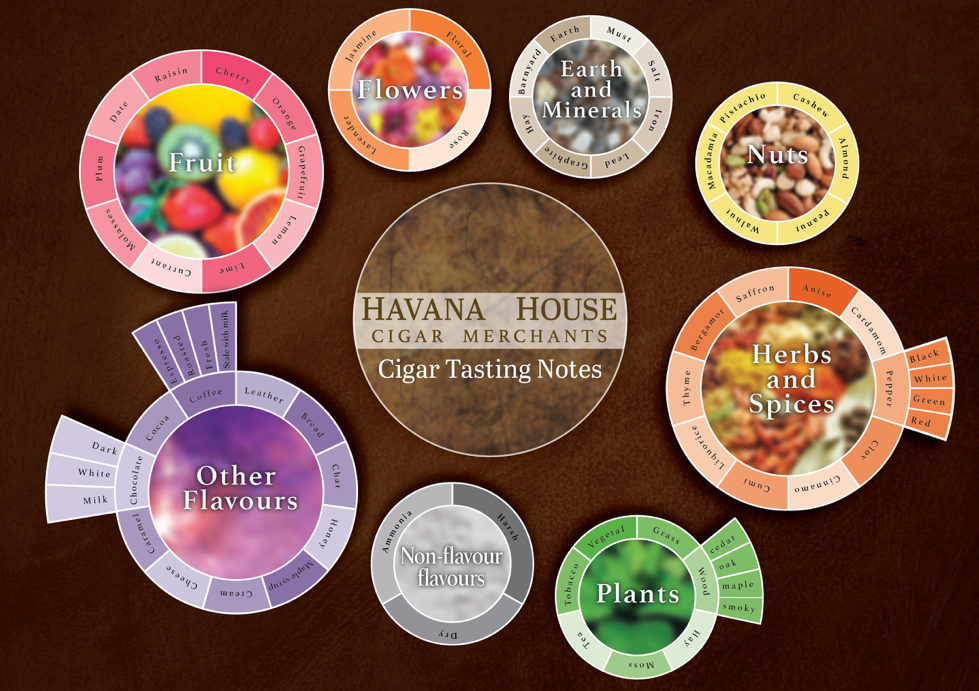
Take a look at our cigar flavour wheels to see some of the common notes present in cigars. Some of them may seem unusual, but a combination of these flavours together can produce a well-balanced, flavourful smoke.

Can You Relight a Cigar?
Cigars tend to extinguish themselves if they are not puffed on every now and then, so you may find that you need to relight your cigar.
To do this, hold the flame just in front of the foot and blow through the cigar to get rid of any trapped ash. Then simply repeat the lighting process.
Do try to keep the cigar going on its own though, by taking a puff every minute or so, as continuously having to relight it may cause the cigar flavour to change into something less pleasant tasting.
Relighting a cigar is also only okay if it is the one you have just been smoking. This means that if you decide you’ve had enough of a cigar and want to leave it for another day, it would actually be better to just start fresh than try and relight a cigar that has been left for more than a few hours.

How Do You Put Out a Cigar?
The best way to put out a cigar is to just let it rest on an ashtray and extinguish itself. Cigars should not be stubbed out like you would with a cigarette.
If you stub out a cigar, you will soon regret it due to the bad smell that it will release! This smell occurs due to the oils and tars that build up as the cigar burns. Stubbing it out releases them, and can cause a stale, lingering odour.
As a cigar only burns when it is actively puffed, simply letting it rest will allow it to put itself out fairly quickly. However, if you are in a rush and want to ensure that the cigar is fully out, you can extinguish it in some (non-alcoholic) liquid, although this is certainly not very dignified!

How Do You Store Cigars?
If you just want to try one cigar soon after you have bought it, then you don’t need to worry too much about storing it. Many singular cigars now come in tubes, which is the perfect place to store the cigar until you smoke it. These tubes can then be kept to carry around more cigars in future.
Other cigars will arrive in a clear plastic wrapper, and as long as this is kept in a cool and dry place, this should be fine if you are planning on smoking it within a couple of days.
Use a Humidor
Decided you want to smoke cigars more regularly? Invest in a humidor, so that you can keep your collection in the best condition possible. Without a humidor, cigars dry out, which can cause cracks and wrapper peeling, as well as making the cigar lose its flavour and burn quicker.
Humidors are needed because the humidity level of tobacco growing countries, like Cuba, is far higher than here in the UK. A humidor is needed to keep cigars fresh and at the right humidity level for the perfect smoke!
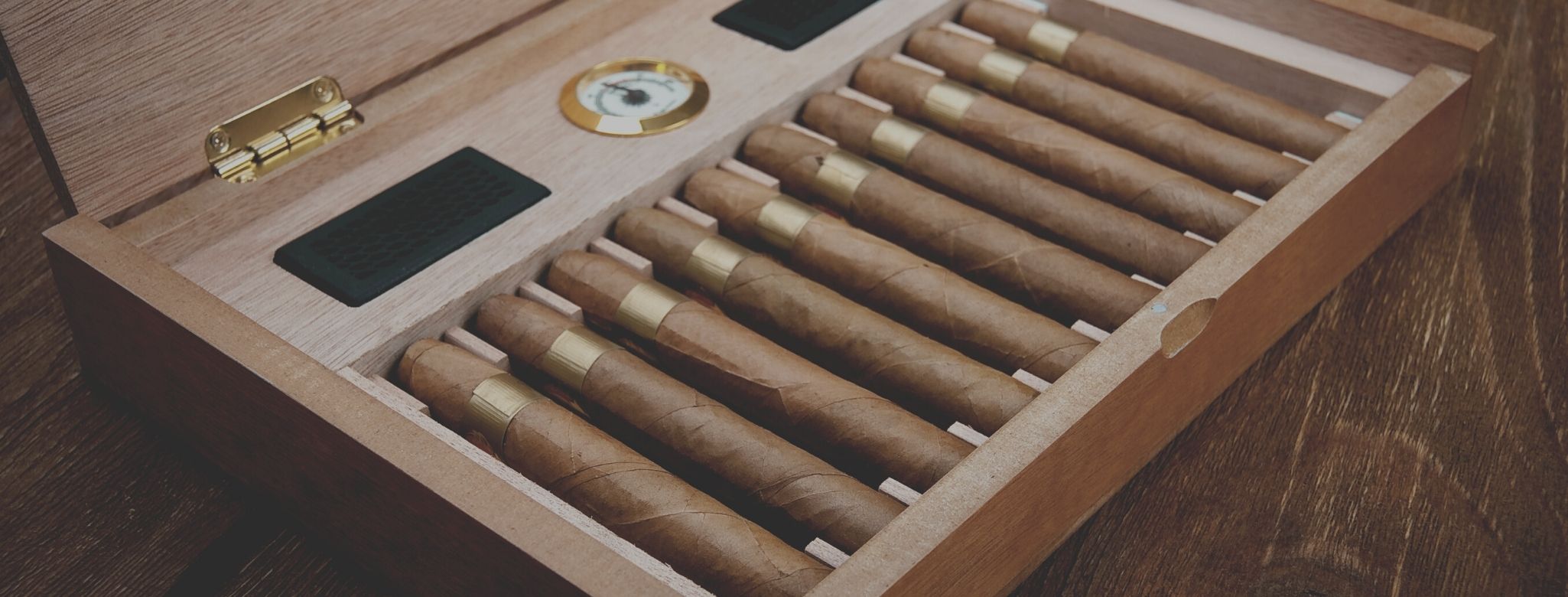
How to Use a Humidor
- Pick a quality humidor the right size for your collection. We recommend one lined with Spanish cedar.
- The humidity of your humidor should be set to around 65-70%. This may need to be adjusted depending on whether your cigars are getting too dry or too moist in your humidor.
- Your humidor should be just right in size; cigars shouldn’t be crammed or have masses of room. If your humidor is getting a little empty, fill the gaps with extra cedar wood or boxes. If you have too many, it’s time for an upgrade or a second box!
- Keep up with humidor maintenance – the humidor needs to be occasionally refilled with water, and the humidification system needs to be checked.

Should You Age Cigars?
Some cigar lovers choose to age their cigars, as this process can enhance the smoking experience. While most cigars don’t actually need to be aged, as the producer will have aged the tobacco for at least a couple of years before rolling, and possibly again after the cigar was rolled, many still find the process fun.
Rather than ageing one singular cigar, it is typically best to buy a box of cigars and put these in a humidor to age. Try one when you first get them and then smoke subsequent stogies from the box every few months or once a year (depending on how many you have).
Each time you smoke them, jot down some notes about the experience, and you’ll be fascinated to see how the flavour and aroma develop over time.

Cigar Troubleshooting
Although it should be rare if you have selected a premium smoke, there can sometimes be issues with your cigar. This may be a fault with the way the cigar has been rolled, or it may be an issue with how you have stored the cigar.
Either way, some issues can be fixed, while others cannot, and the cigar should be discarded. Here we highlight some of the potential issues and how you should deal with them.
Uneven Burn
Burn issues are one of the most common problems with cigars. These can be due to a rolling fault or bad lighting technique. Some cigars may be unrecoverable, but many can be fixed with a bit of patience and a dab hand with a lighter.
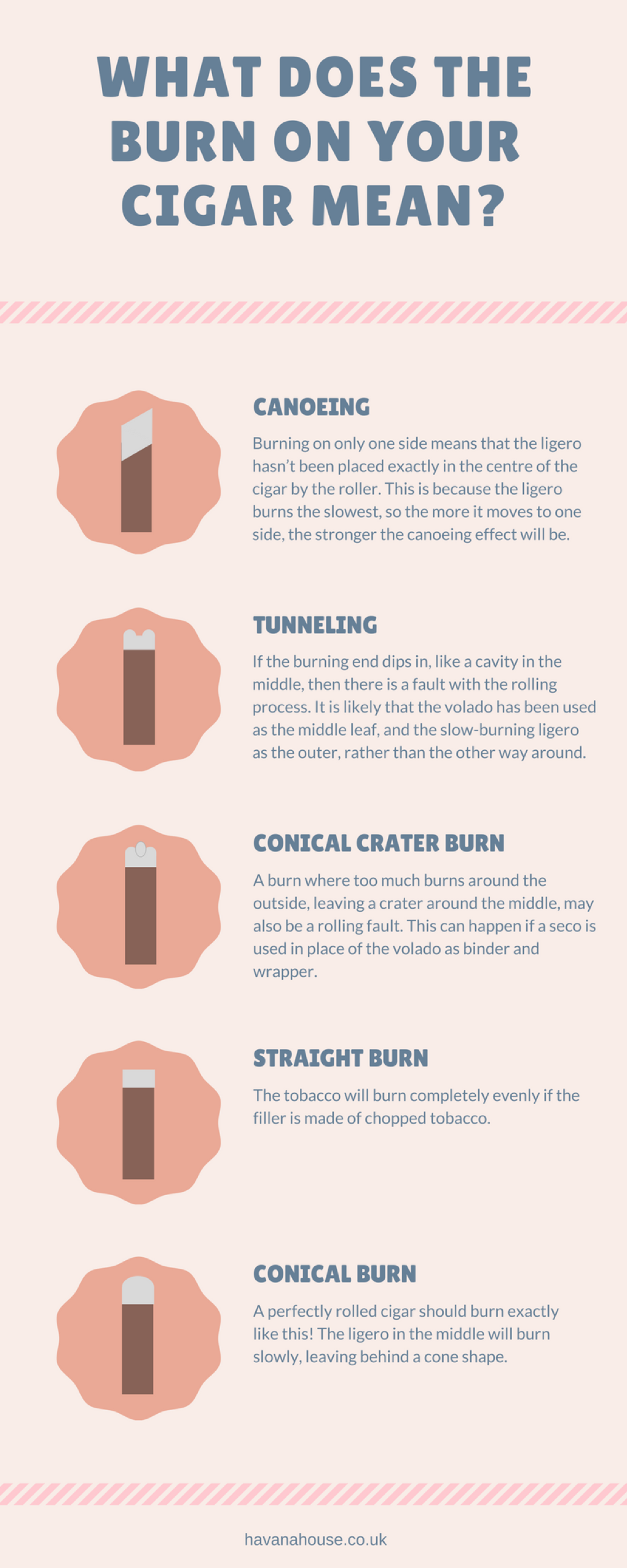
Canoeing is often the most common burn issue, with one side of the cigar burning faster than the other. This could be from an off-centre ligero, or from not properly toasting the cigar, so one side is lit more fully than another.
It is fairly easy to remedy a canoed cigar – simply slow down your smoking, so the cigar has time to cool down. The faster you smoke, the hotter a cigar burns, so slowing down your puffs can give the cigar a chance to right itself.
If further action is needed, then stop smoking and let the cigar cool before clipping the end with a cigar cutter. Then blow through the cigar to expel any chemicals within the cigar before relighting properly.
Cigar Beetle
If your cigar has pinprick holes across it, or there is evidence of black dust in your humidor, then it is likely your cigars have been affected by cigar beetles.
A cigar affected by cigar beetles is unrecoverable and should be discarded. Whenever you get new cigars, check them thoroughly before placing them in your humidor to prevent introducing cigar beetles to your collection.
To prevent future problems with cigar beetles, it is important to keep your humidor at a steady temperature of 21 degrees Celsius.

Humidification Issues
Issues can also arise from incorrectly storing your cigars in a humidor. If your cigar is over-humidified, then it may feel spongy and damp, whereas an under-humidified cigar may feel dry and brittle.
- An under-humidified cigar should be put back in the humidor, at 70% humidity, and left for a week.
- An over-humidified cigar should be placed back in the humidor, surrounded by some cedar strips, and left at the right humidity for a week.
Repairing Cigars
Accidental damage can happen to your cigars, whether they’ve been knocked in your bag or unravelled a bit when cutting the cap. You can probably still smoke a damaged cigar, although it is likely that it will have some burn issues. There is also a way to patch up damage:
What Will I Need to Fix My Cigar?
- Box 100% Natural Pectin (this can be found in the supermarket)
- A small container of some sort (such as the lid to a soda bottle)
- A small amount of water
- 1 Toothpick
- A small amount of donor tobacco to use as a patch
How Do I Fix My Cigar?
- Place a small measure of warm water into your soda bottle cap.
- Add in a small amount of pectin and stir with a toothpick.
- Apply pectin with a toothpick to both the cigar and donor tobacco.
- Apply patch, press firmly and remove any wrinkles.
- Allow pectin to dry for about one minute then enjoy your repaired cigar.

Cigar Pairing
One of the best ways to enhance your cigar smoking experience is to learn how to successfully pair your cigar with food or drink. By matching or contrasting flavours from food or drink items, you can create more complex tasting experiences and may even draw out hidden notes within your cigar.
Finding the perfect marriage between cigars and another ingredient can be tricky to get right, so check out our guide to pairing infographic below to learn the basic rules and discover some essential pairing types.
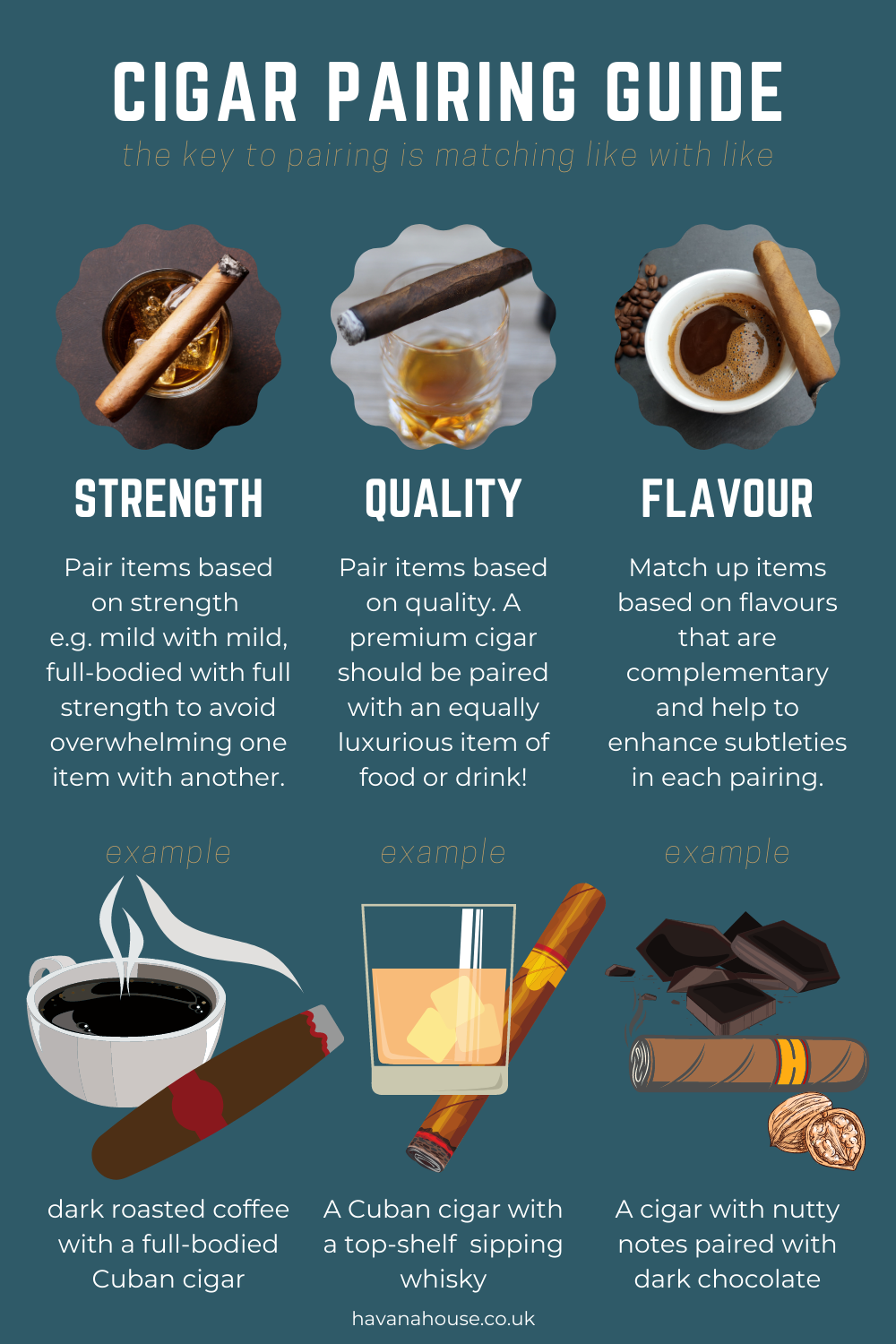
When it comes to cigar smoking, knowing where to start can sometimes be a bit daunting, so we hope that this guide will provide all the information you need. If you still have any questions, then please get in touch, either via the comments below or through our social media channels!
The only thing to do next is to buy some cigars to try and get puffing!






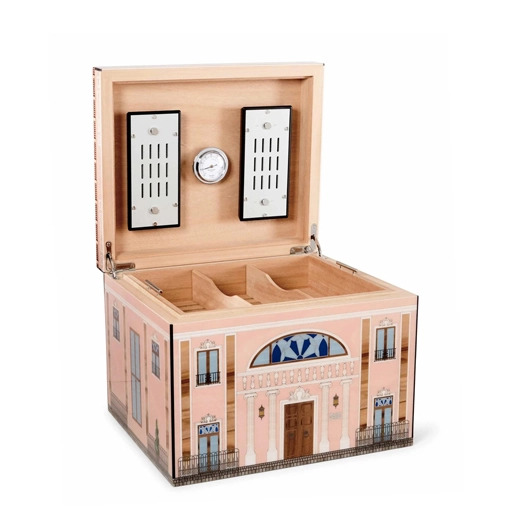

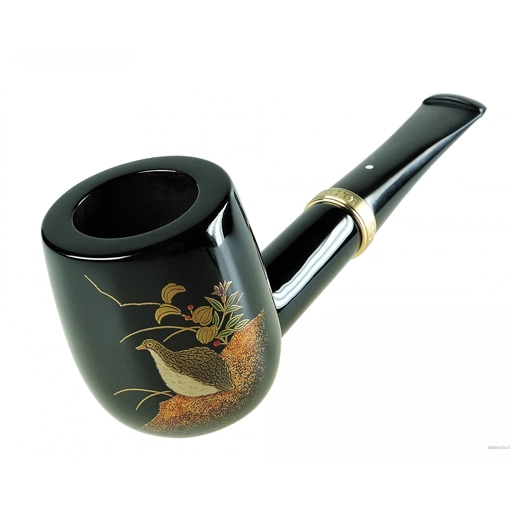
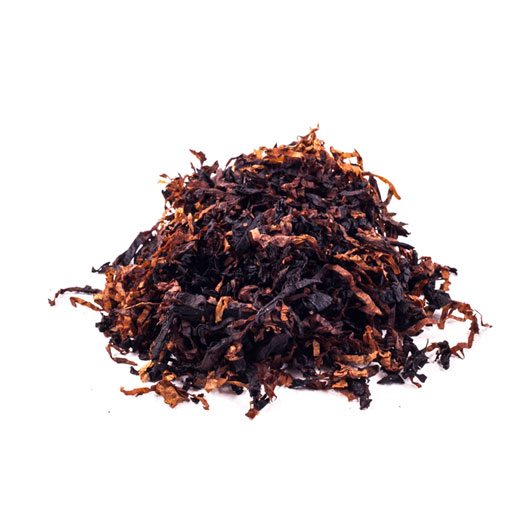

Pingback: Christmas Gift Buying Guide 2018 | Havana House